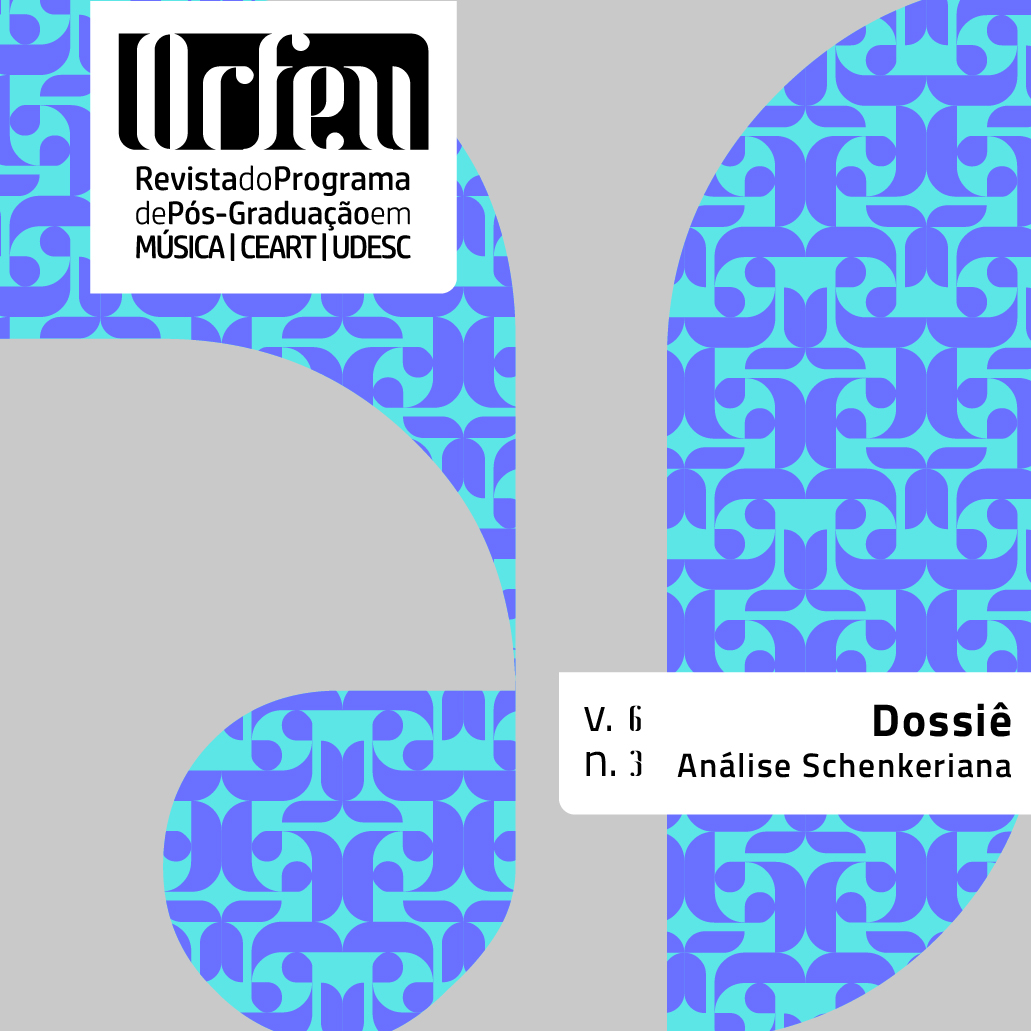Rules Are Made to Be Broken, or the Menuetto of Beethoven’s Op. 2, No. 1
DOI:
https://doi.org/10.5965/2525530406032021012Palabras clave:
Beethoven, motive, Schenkerian analysis, TonwilleResumen
A striking gesture appears at the climax of the first phrase of the Menuetto from Ludwig van Beethoven’s Sonata for Piano in F minor, Op. 2, No. 1. This motivic gesture, which may be understood as derived from manipulation of standard voice-leading procedures, has intriguing ramifications that deeply affect the structure and narrative of the entire movement. These features are explored with the aid of Schenkerian analytic procedures, and the analysis is then compared to an interpretation of this same movement by Heinrich Schenker.
Descargas
Citas
Gerling, C. G.; Barros, G. Glossário de termos schenkerianos, rev. A. L. Moreira and I. G. Nabuco. Salvador: TEMA, 2020.
MARTIN, A. Sunken II Chords and Inwardness: A Correspondence Complex in Robert Schumann’s Liederjahr Songs. Ph.D. diss., CUNY, 2018.
OSTER, E. The Dramatic Character of the Egmont Overture. Musicology, v.2, n.3, p.269–285, 1949.
SAMAROTTO, F. Determinism, Prediction, and Inevitability in Brahms’s Rhapsody in E-flat major, op. 119, no. 4. Theory and Practice, v.32, p.69–99, 2007.
SAMAROTTO, F. Sublimating Sharp : An Exercise in Schenkerian Energetics. Music Theory Online, v.10, n.3, 2004.
SCHACHTER, C. The Triad as Place and Action. Music Theory Spectrum, v.17, n.3, p.149–169, 1995.
SCHACHTER, C. Structure as Foreground ‘das Drama des Ursatzes,’ in Schenker Studies 2.Cambridge, Cambridge University Press, p. 298–314, 1999.
SCHENKER, H. Der freie Satz. Vienna: Universal Edition, 1935.
SCHENKER, H. Beethoven: Sonate opus 2 Nr. 1. Tonwille 2. Vienna: A. Gutmann Verlag, p.32–33 and Appendix, 1922.
SUURPää, L. Death in Winterreise: Musico-Poetic Associations in Schubert’s Song Cycle. Bloomington Indiana: Indiana University Press, 2014.
TERRIGNO, L. The Protagonist’s Experience: Temporality, Narrative, and Harmonic Process in Brahms’s Solo Lieder. Ph.D. diss., CUNY, 2016.
Descargas
Publicado
Cómo citar
Número
Sección
Licencia
Derechos de autor 2021 Poundie Burstein

Esta obra está bajo una licencia internacional Creative Commons Atribución 4.0.






